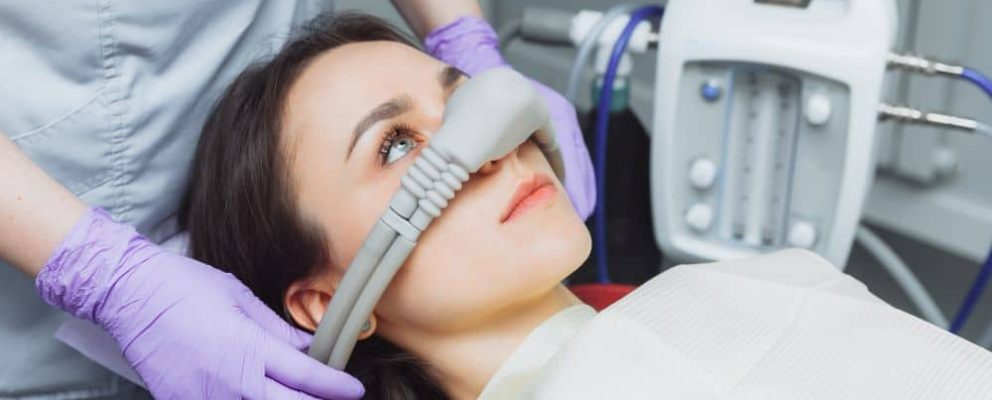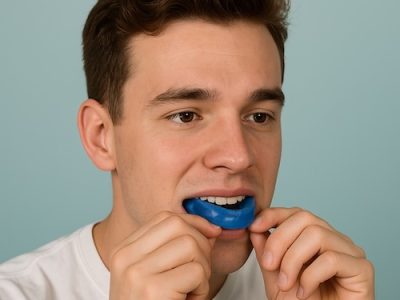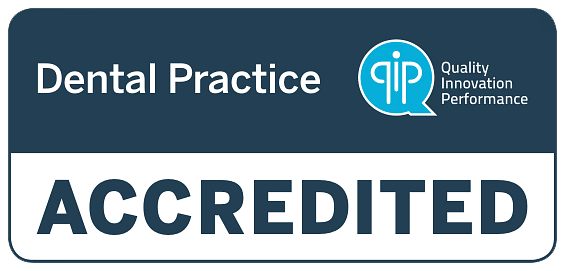Going to the dentist is exciting. You’ll have cleaner, healthier teeth after your procedure. But not everyone is eager and enthusiastic to see their dentist. A lot of people get anxious and even terrified when they see the dentist’s chair. This is where dental sedation becomes beneficial.
What is Sedation Dentistry?
Dental anxiety is real, experienced by 50% to 80% of adults, ranging from mild to severe. Some patients experience extreme dental fear, causing them to skip dental appointments. Thankfully, dentistry has evolved and improved with several solutions for patients needing extra comfort when in the dental chair. This is through sedation dentistry.
Sedation dentistry involves the use of medication for patients to stay calm during their dental procedure. You may have heard this method referred to as “sleep dentistry.” However, this term is not accurate since only those under general anaesthesia go to sleep. Other forms of sedation keep patients awake.
There are a few levels of sedation dentistry that you may be interested in learning about:
- General Anaesthesia: As mentioned, you will be completely unconscious when under general anaesthesia.
- Deep Sedation: This is almost like the previous one, but you can still be awakened. You can think of this level as being on the edge of consciousness.
- Moderate Sedation: At this level, you’re conscious, which is why it was once called “conscious sedation.” If you have watched those viral sedation videos, they are patients who received moderate sedation. Notice how they are awake but not alert and slurring their words. They usually do not remember most of what happened during the procedure.
- Minimal Sedation: For patients who are not too anxious but require help relaxing, minimal sedation can be useful. This level of sedation keeps you awake, but you will stay calm during the entire procedure.
Not everyone requires sedation. If you feel a little bit nervous because of an upcoming procedure, but it’s manageable, you most likely don’t need to be sedated. However, you should always talk to your dentist so that you can have an appropriate level of sedation if necessary.
Who Needs Sedation Dentistry?
Patients who have a real fear of going to the dentist should get sedated. Suppose you find it difficult to go to the dental office or always have an excuse to delay or even cancel your appointment. In that case, it may be due to your fear or anxiety.
Some people may require sedation for a variety of reasons. If any of the following describes you, you may benefit from sedation the next time you visit your dentist:
1. Sensitive Teeth
Teeth sensitivity can be extreme in many cases. It’s not uncommon to have sensitive teeth. Patients with this issue can get by with topical anaesthesia. However, you may need sedation if you have extreme teeth sensitivity. Often minimal to moderate sedation is used to help in such cases. However, deep sedation may be needed if the pain is felt during the process.
2. Low Pain Tolerance
If your pain threshold is lower than average, sedation can help. Some people cannot tolerate even a simple dental cleaning procedure. That’s why they require minimal to moderate sedation, which can help alleviate the problem.

3. Strong Gag Reflex
All people have a gag reflex, referring to the body’s response occurring in the back of the throat. It happens when something touches the soft palate known as glossopharyngeal nerve fibre found at the back of the mouth and the nasal cavity. Because of such an interaction, the natural response of the body is to “gag,” effectively preventing choking. Some people, however, have very sensitive gag reflexes, causing them to “gag” when their teeth are getting cleaned, for example.
For this reason, sedation dentistry is required to calm the patient’s pharyngeal nerves. Minimum sedation helps with this issue.
4. Extensive Dental Work
Some patients need sedation for simple procedures, including cleanings and even check-ups. But you do not have to be anxious to require sedation. Some procedures automatically call for sedation, such as:
- Wisdom Teeth Removal: It usually takes up to 30 minutes for this oral surgery to be completed. However, oral surgeons opt to sedate their patients to put them at ease. Additionally, being sedated allows easy access to deep-rooted areas in the mouth where wisdom teeth are often located. More often than not, oxide sedation is used, but others prefer IV sedation.
- Root Canals: Many people dread a root canal procedure. It is possible to forego sedation, but most patients and dentists use sedation, such as oxide. Others use oral sedatives, including anti-anxiety medications.
- Teeth Extractions: Even with normal pain tolerance, it’s uncommon for people to have their teeth extracted without sedatives. Minimum sedation is often applied to help ready the patient mentally and physically. Extractions are considered a quick and straightforward procedure. However, patients need to understand that sedatives can render them incapable of doing regular tasks after the appointment. That’s why patients are advised to have someone drive them home even after a few hours of the surgery.
Minimal sedation is usually preferred for most procedures. Make sure that you talk to your dentist to learn about the available sedation options for your upcoming dental work.
5. Children
Many adults are scared of the dentist, so it is not surprising that children are susceptible to dental anxiety. According to a study, up to 20% of children in different countries have a severe dental phobia (dentophobia). It is often difficult to talk to children to calm them down, so sedation is useful. If your child is restless or has trouble sleeping at night before the dental appointment, it may be due to dental anxiety.
Other signs and symptoms of dental phobia or anxiety to watch out for are:
- Feeling sad or tearful before, during, and after the procedure
- Sweating even when in a cool room
- Flushed cheeks
- Easily irritated
- Feeling cranky
- Fainting
- Dizziness
- Feeling sick (often to convince the parents to cancel the appointment)
If your child refuses to go to the dentist, it may signify dental anxiety. Minimal sedation, when carefully applied, can help alleviate the situation. However, some may require moderate sedation, especially those who are paralysed with fear or those refusing to sit in the chair.
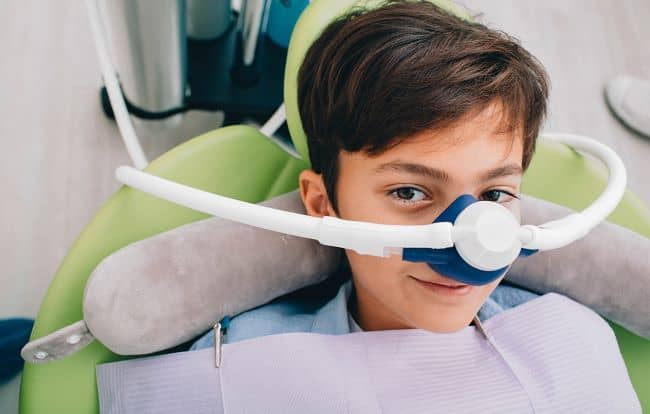
Which Type of Sedation Do You Need?
If you require sedation, the dentist will administer a drug before – sometimes during – the procedure. The most common types of sedation dentistry are the following:
Nitrous Oxide Sedation
You may know about nitrous oxide as the “happy gas.” With this sedation type, you inhale two gases: oxygen and nitrous oxide. The blend of gases will be administered to you through a mask that will sit over your nose.
Nitrous oxide is effective in raising a person’s pain tolerance. At the same time, the patient will feel relaxed so that the dentist can perform the necessary oral procedure. This sedation method is useful for those who are often anxious or nervous when on the dental chair. It only takes three to five minutes to take effect. Once the gas is turned off, it dissipates from the body almost instantaneously.
Nitrous oxide does not cause you to go unconscious. You will stay alert, allowing you to respond to questions without problems. This type of sedation is appropriate for almost everyone and is generally safe, except for those with:
- Pulmonary diseases
- Respiratory infections (during the time of the procedure)
- Multiple sclerosis
- Cancer
- A compromised immune system
- Ear infections causing blocked middle ear
- Psychiatric diseases
It’s also not recommended for people who take any antipsychotic medications. Those who may not understand or communicate properly with the dentist due to a language barrier or speech disabilities may need other options. If you’re pregnant or breastfeeding, you should not take this type of sedation.
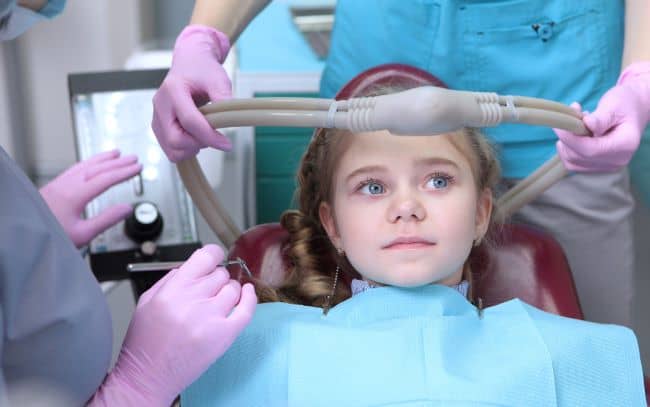
Oral Sedatives
Typically given in pill form, oral conscious sedation allows patients to get through their dental anxiety. It’s often given an hour before the procedure. Options include:
- Triazolam
- Diazepam
- Zaleplon
- Lorazepam
For children, a liquid sedative is given, such as midazolam syrup.
The side effect of oral sedation is grogginess. Many patients become sleepy and may even fall asleep completely. However, they can easily be awakened, usually achieved by nudging the patient in case the dentist has a few questions or requests.
It’s important to understand that your motor skills and memory will be affected even though we’re talking about oral conscious sedation. You should never drive home after the procedure, even if you think that the drug’s effects have worn out.
Intravenous (IV) Sedation
IV is for deep sedation without putting you to sleep. It does result in less awareness of the surroundings, although some people may still be fully conscious. Even with deep sedation, you can still respond to the dentist’s requests, such as opening your mouth. It is false that you need help breathing when under IV sedation.
As the name suggests, intravenous sedation is administered through the vein. People who dislike getting pricked by a needle generally avoid this sedation method. However, when required, it does provide several benefits, including:
- Working immediately
- Adjustable dosage
- A long period of amnesia
- Great for extended procedures
If the dentist has to perform more than one procedure, IV sedation is typically the route. You do not have to take multiple trips to finish the surgeries since it allows you to cooperate for a more extended period. You will not remember what took place during the procedure, which helps a lot of people with dental anxiety. Another benefit is that you may not feel pain at all. However, some patients say they did feel pain, although it is very minimal.
IV sedation is for you if you have:
- A strong gag reflex
- Moderate to high anxiety when visiting your dentist
- An upcoming painful or prolonged dental work
Will you get sedated via IV? Or is nitrous oxide or a sedative more appropriate for you? Ultimately, the choice is between you and your dentist. Make sure you know your options to receive relaxing and comfortable dental care. It’s also vital that you receive sedation from professionals with adequate training.
Most dentists can administer nitrous oxide but not with other types since they require additional equipment, emergency supplies, and training. General anaesthesia is not commonly provided except in special cases involving people with extreme dental anxiety and children.
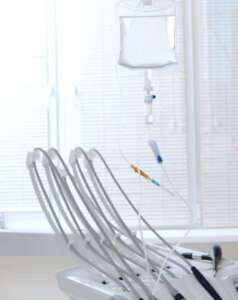
Are you ready to get your oral health in order without fear and anxiety? Please get in touch with the friendly dentists at Chelmsford Dental today.
